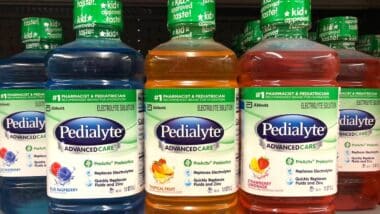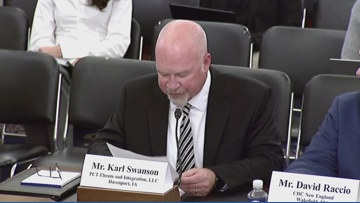Report on the St. Luke’s Regional STEM+M Initiative and its Contribution to Sustainable Development Goals
Event Overview and Objectives
- A regional, hands-on STEM+M (Science, Technology, Engineering, Mathematics, and Medicine) event was hosted by St. Luke’s in Mobile, Alabama.
- The initiative was designed for students in grades three through six.
- The primary objective was to provide an immersive, practical experience to foster early interest in critical career fields, thereby building a foundation for future innovation and sustainable development.
Strategic Partnerships for Sustainable Impact
The event exemplified a multi-stakeholder collaboration, uniting diverse institutions to achieve a shared educational mission in line with SDG 17: Partnerships for the Goals. Key partners included:
- The University of South Alabama
- The Alabama Coastal Foundation
- The Dauphin Island Sea Lab
- Evonik
Alignment with United Nations Sustainable Development Goals (SDGs)
The STEM+M initiative directly supports several key UN Sustainable Development Goals, demonstrating a commitment to fostering a sustainable and equitable future through education and innovation.
- SDG 4: Quality Education: The event provided inclusive and equitable hands-on learning opportunities beyond the traditional classroom. This approach is critical for sparking passion and ensuring all learners acquire the knowledge and skills needed to promote sustainable development.
- SDG 9: Industry, Innovation, and Infrastructure: By exposing young students to science, technology, and engineering, the program cultivates a future generation of innovators. This is essential for building resilient infrastructure, promoting inclusive and sustainable industrialization, and fostering innovation. As noted by Kelly Miears of Evonik, such experiences can “incite a passion for chemical engineering.”
- SDG 14: Life Below Water: The involvement of the Alabama Coastal Foundation and the Dauphin Island Sea Lab introduced students to marine biology, directly supporting the goal to conserve and sustainably use the oceans, seas, and marine resources for sustainable development.
- SDG 5 & 8 (Gender Equality & Decent Work and Economic Growth): By encouraging all students to explore STEM+M fields from an early age, the initiative helps address potential gender disparities in these sectors. It also prepares the future workforce for high-skill, sustainable employment, contributing to long-term inclusive and sustainable economic growth.
Analysis of SDGs in the Article
1. Which SDGs are addressed or connected to the issues highlighted in the article?
The article on the STEM+M event at St. Luke’s school addresses several Sustainable Development Goals (SDGs) through its focus on education, partnerships, and specific scientific fields.
- SDG 4: Quality Education: This is the most prominent SDG, as the entire event is focused on providing an “immersive experience” in science, technology, engineering, mathematics, and medicine for students in grades three to six.
- SDG 14: Life Below Water: The involvement of the Alabama Coastal Foundation and the Dauphin Island Sea Lab, along with the specific mention of “marine biology” as a potential career path, directly connects the event’s educational goals to the conservation and sustainable use of marine resources.
- SDG 17: Partnerships for the Goals: The article explicitly highlights the collaborative nature of the event, which is a core principle of SDG 17. It mentions the school teamed up with a university, private industry, and non-profit foundations.
2. What specific targets under those SDGs can be identified based on the article’s content?
Based on the activities and goals described, several specific SDG targets can be identified:
- Target 4.4 (under SDG 4): “By 2030, substantially increase the number of youth and adults who have relevant skills, including technical and vocational skills, for employment, decent jobs and entrepreneurship.”
- Explanation: The event’s purpose is to “incite a passion for chemical engineering, for marine biology, for all of these STEM careers.” By providing hands-on experience in these technical fields, the initiative aims to equip young students with interest and foundational knowledge, contributing to a future skilled workforce.
- Target 4.7 (under SDG 4): “By 2030, ensure that all learners acquire the knowledge and skills needed to promote sustainable development…”
- Explanation: The inclusion of marine biology and the partnership with the Alabama Coastal Foundation and the Dauphin Island Sea Lab indicate that the education provided is linked to environmental awareness and sustainability, specifically concerning coastal and marine ecosystems.
- Target 14.a (under SDG 14): “Increase scientific knowledge, develop research capacity and transfer marine technology…”
- Explanation: By introducing young students to marine biology through a “hands-on experience” with experts from the Dauphin Island Sea Lab, the event helps build a foundation for future scientific knowledge and research capacity in marine sciences.
- Target 17.17 (under SDG 17): “Encourage and promote effective public, public-private and civil society partnerships…”
- Explanation: The article provides a clear example of this target in action. The event is a multi-stakeholder partnership involving a school (St. Luke’s), a public university (University of South Alabama), private sector (Evonik), and civil society/research organizations (Alabama Coastal Foundation, Dauphin Island Sea Lab).
3. Are there any indicators mentioned or implied in the article that can be used to measure progress towards the identified targets?
While the article does not provide quantitative data, it mentions or implies several qualitative and quantitative indicators that could be used to measure progress:
- Indicator for Target 4.4: The number of students participating in the STEM+M event. The article states that “Students in grades three to six were welcomed,” implying a specific cohort whose participation could be counted as a measure of outreach.
- Indicator for Target 4.7: The inclusion of specific sustainability-focused subjects in the event’s curriculum. The mention of “marine biology” serves as a direct indicator that education for sustainable development is part of the program.
- Indicator for Target 14.a: The number of students engaged in marine science activities. The partnership with the Dauphin Island Sea Lab implies direct engagement, which could be measured to track progress in fostering interest in marine science.
- Indicator for Target 17.17: The number and type of organizations collaborating on the initiative. The article explicitly lists the partners: “the University of South Alabama, the Alabama Coastal Foundation, the Dauphin Island Sea Lab and others,” including Evonik. This list itself serves as an indicator of a successful multi-stakeholder partnership.
4. Summary Table of SDGs, Targets, and Indicators
| SDGs | Targets | Indicators |
|---|---|---|
| SDG 4: Quality Education | Target 4.4: Increase the number of youth with relevant technical skills for employment. | The number of students (grades 3-6) participating in the hands-on STEM+M event. |
| Target 4.7: Ensure learners acquire knowledge and skills for sustainable development. | Inclusion of “marine biology” in the event’s topics, facilitated by environmental organizations. | |
| SDG 14: Life Below Water | Target 14.a: Increase scientific knowledge and develop research capacity in marine sciences. | Engagement of students in marine biology activities through the partnership with the Dauphin Island Sea Lab. |
| SDG 17: Partnerships for the Goals | Target 17.17: Encourage and promote effective public, public-private and civil society partnerships. | The documented collaboration between St. Luke’s school, University of South Alabama, Evonik, Alabama Coastal Foundation, and Dauphin Island Sea Lab. |
Source: fox10tv.com







